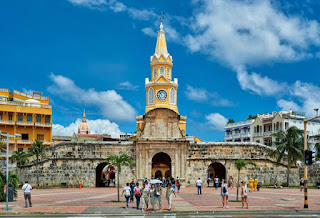History and politics of Costa Rica
Christopher Columbus landed Costa Rica in 1502 and there were less than 20 tribes there. The Carib Indians wore jeweler like nose rings and earrings that were made of gold bands inspired Columbus to name the country Costa Rica. With the arrival of Christopher Columbus led to the decreasing of the native people due to diseases that the crew brought and fatal battles. Not a lot of Spanish colonist claimed Costa Rica because of the lack of silver or gold and early attempts to colonize failed because of hot weather and different diseases. And the region was really poor compared to other countries around it. Later in 1564 the Spanish established the village Cartago in the Valle Central as the permanent. Costa Rica gained its independence from Spain in 1821. Near the end of the 19th century Costa Rica began to export sugar and coffee to where transportation was becoming strained. With the help from the British and Jamaican, Chinese, and Italian worker built the nineteenth-century railroad project. This railroad connected San José to Puerto Limón. In 1948 the Costa Rican government had a travel ban against Afro Caribbean people and did not recognize them as citizens. As a product of the travel ban many people in the Afro-Caribbean population stayed in a certain part of outside the Limón province. Even after the “ban” was lifted they chose to not move back. Languages like Limón Creole and Spanish are still spoken in that region along with many other languages.
Juan Mora Fernandez was elected the nation’s first chief of state in 1824. The first democratic election in Costa Rica was held in 1889 and they had 2 problems with the democratic election. In 1913 during the first election under direct suffrage none of the candidates won the majority and the legislative assembly had choose Alfredo González. In 1917 Federico Tinoco overthrew Alfredo González and it was not popular. Many Costa Ricans were not happy, and he was deposed in 1919. Other than those 2 examples Costa Rica is regarded as having the most stable democratic government. The constitution of 1949 provides a unicameral legislature, independent electoral body, and a fair judicial system. The constitution also gave women the right to vote and abolished the country’s army. The governors of the seven provinces are appointed by the president of Costa Rica. Also, in Costa Rica any citizen over the age of 18 are required to register to vote and participate in elections.
“History of Costa Rica.” Costa Rica, www.costarica.com/travel/history-of-costa-rica/.
“History of Costa Rica.” Encyclopædia Britannica, Encyclopædia Britannica, Inc., www.britannica.com/topic/history-of-Costa-Rica.
Harris, JoAnne. “Costa Rica .” The Virtual Caribbean Library, ggccaribbean.wpengine.com/listing/costa-rica/.





Comments
Post a Comment